Having some funny looking rashes on your skin and want to be sure what it might be, then you need to know about how to get rid of keratosis pilaris? Have you ever been faced with ugly parchments on your skin making it look bumpy and rough as if you have got Goosebumps? Well, you might just be a victim of Keratosis Pilaris involving the presence of excessive keratin on the skin surface. Also, known as ‘chicken skin’ it gives your skin the feeling or looks of sandpaper.
Are you in a hurry to know how to treat keratosis pilaris on the face, arms or any other part of the body? But wait; let’s have a better understanding of what we are dealing with and then possible ways of dealing with it.
The good thing is keratosis pilaris is benign or harmless and does not give any discomfort or feeling of being ill. But it provides an uneasy feeling to particularly people who are very sensitive about their skin and looks. Some persons do gentle exfoliating to get rid of this condition but let’s explore some key facts, their causes and how to get rid of keratosis pilaris.
1. Facts About Keratosis Pilaris: How It Looks On The Skin

Before we move on to discuss keratosis pilaris treatment, let’s give some description and facts. Keratosis pilaris is known to affect nearly half the UK population with one out of three persons in the UK suffer from mild to severe case of KP. Statistics indicate that 50%-70% adolescents and 40% adults suffer from KP. More facts suggest that one of two siblings from an affected family can be a victim.
Keratosis means excessive Keratin pilaris which is a Latin word, ‘pilus’ means hair. Why some persons take to chemical exfoliating others take to regular body wash to improve the skin condition, we will explore some better ways on how to get rid of keratosis pilaris as against the use of harsh skin care products. More facts:
- Keratin pilaris affects more of babies and adolescents than adults.
- It is transferable from parents to children.
- KP becomes severe at an adolescent age close to puberty.
- It is an internal problem that manifests outwardly.
- It is known to occur in adulthood for those who suffer it in their adult life.
- Some persons experience KP in their 40s, and under 50 years of age. KP rarely occur in elderly persons.
- More prevalent amongst females.
- Keratosis pilaris is not in any way contagious or airborne.
- Scientific researchers are yet to come up with a permanent cure or method on how to get rid of keratosis pilaris.
2. Common Body Areas Affect By Keratosis Pilaris
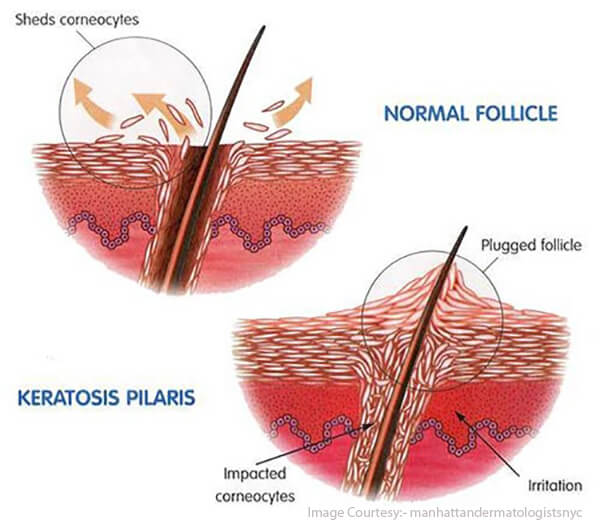
Commonly affected areas include:
- The back of a person’s upper arms.
- The entire buttocks
- Front of the thigh
Irregular cases include
- The upper back, forearms.
- Some rare variety of keratosis pilaris can affect the face, upper eyelid, scalp or the entire body.
3. What Causes Keratosis Pilaris?
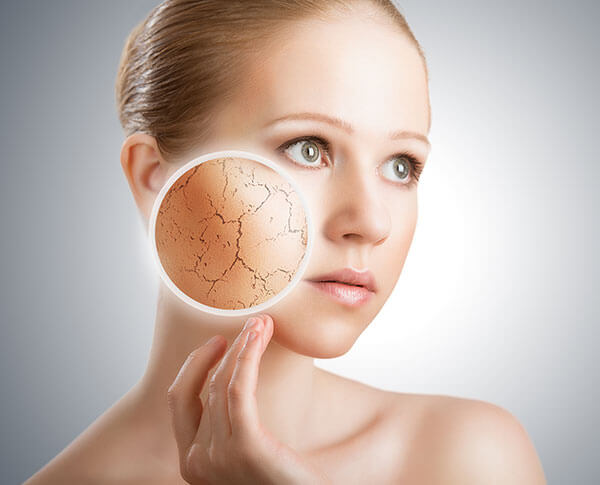
- Inconclusive findings indicate that persons who experience dry skin conditions or ichthyosis can become victims of KP.
- Other causes include a deficiency of essential oils, zinc, vitamins A, D, and K.
- Excessive keratin results in the production of horny plugs on the outer skin blocking off oxygen from the skin surface and hair follicles. The build-up of Keratin on the skin surface, therefore, results in the condition known as keratosis pilaris.
- Having skin infections such as eczema can make one a victim of keratosis pilaris.
- People of Celtic origin are known to experience different variations.
- Keratosis pilaris is hereditary.
4. Symptoms And Appearance Of KP On The Skin
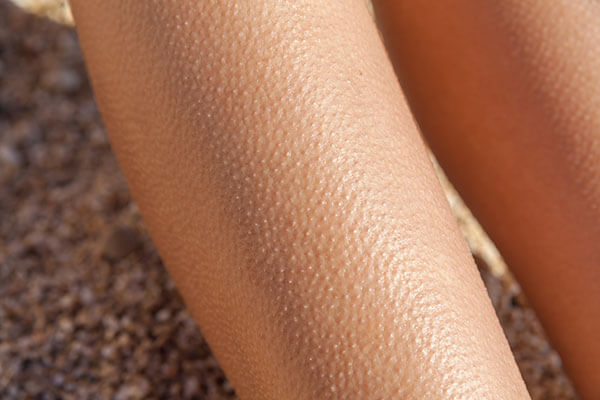
- Chicken skin
- Red bumps, pink or white bumps
- Itchy feelings on the skin surface
- Goosebumps
- Dry bumps
- Sandpaper-like skin texture
- Rough or spiky looking skin
- Reddish pimple-like spots
- Inflammation around the bumps
Related:- WHAT IS XEROSIS CUTIS OR ABNORMALLY DRY SKIN? KNOW ALL ABOUT IT
5. Can Keratosis Pilaris Go Away?
Unfortunately, no known cure for keratosis pilaris exists, for now. See suggestions underneath on how to get rid of keratosis pilaris.
- How to Treat Keratosis Pilaris on Face and Other Parts of the Body
- Lemongrass
- Lemon
- Frankincense
- Roman chamomile
- Tea tree
- Lavender
- Baking soda
- Sour cream
- Oatmeal
- Vitamins A, D, and K, the fat-soluble vitamins
- Walnuts provide an excellent source of essential fatty acid for KP.
- Have a proportionate intake of carbohydrate and fats daily.
- Vegetables and fruits.
- Eggs and organ meats
Different people adopt different methods for keratosis pilaris treatment. Treatment for keratosis pilaris include:
Home Remedies To Cure Keratosis Pilaris Permanently
Home remedies are known to be very useful in the treatment of Keratosis pilaris. Some home remedies include:
a) Essential Oils For Keratosis Pilaris
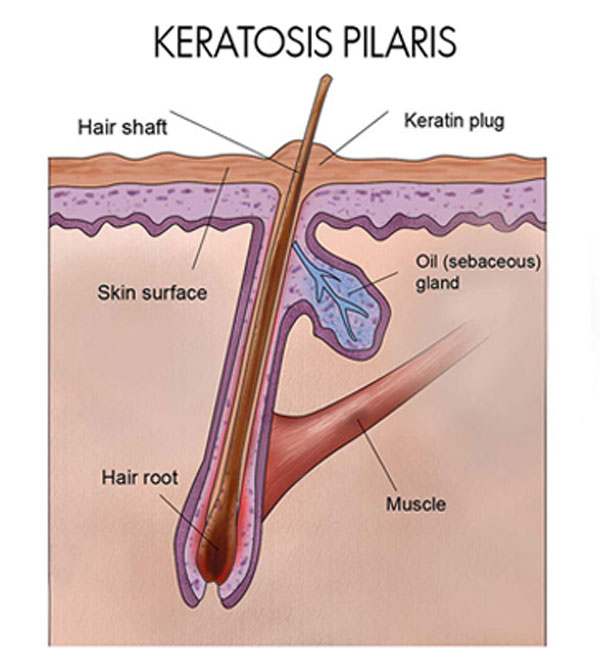
An essential oil is beneficial in dealing with Keratosis pilaris. They help kill the microbes, reduce redness, itching, and irritation. Cold-water fish to include mackerel, salmon and sardines contain the essential fatty acid that can help manage KP.
b) Six Best Plant-Based Essential Oils
c) Apple Cider Vinegar Keratosis Pilaris
Apple cider can help treat KP by mixing an equal portion of water as well as vinegar and apply daily on the affected area. It is good for overall body health and contains astringent properties good for opening pores.
d) Coconut Oil For KP
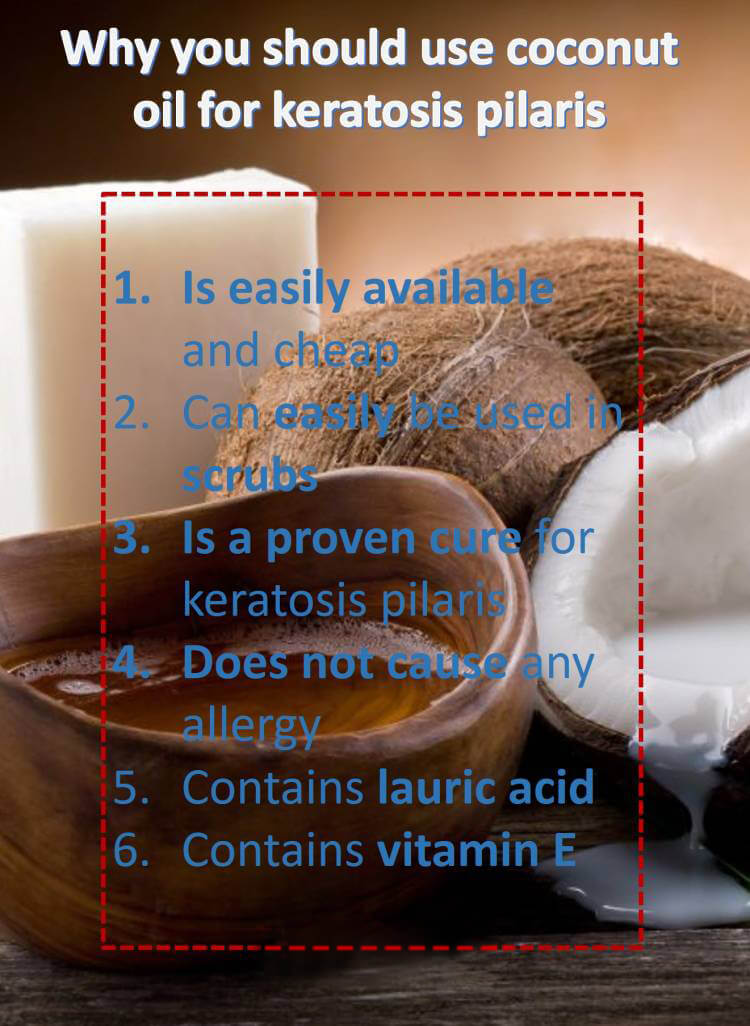
Is Coconut Oil Good for Keratosis Pilaris?
Coconut oil can also serve as a home remedy against keratosis pilaris. Applying coconut oil immediately after bathing and while the skin is still moist is helpful in the fight against KP.
Coconut oil has anti-inflammatory and anti-microbial properties against KP. It also has skin glowing features that can promote smoother skin and prevent dry skin.
Other home remedies involving the mixture and application of components include:
e) Dietary Solutions To Keratosis Pilaris
Experience and more have shown that your diet can help in improving KP situations. You can use:
6. Useful Tips For Treatment/ Avoidance Of KP

- Stick to using non-soap cleansers to moisturize your skin and remove dead skin cells on the affected area and for a smoother skin surface. Regular soap could lead to skin dryness and worsen skin condition.
- Always keep your skin surface moisturized for smoother skin. Consult your dermatologist or a certified cosmetologist for suggestions of creams to use. Skin care products containing lactic acid, salicylic acid, and glycolic acid help to keep the skin hydrated and the hair follicle looking healthy against KP. Lactic acid, for instance, can help in gentle exfoliating of the skin as a treatment for KP.
- Avoid hot baths as it tends to reduce the moisturizer on your skin as the hot water eliminates a more significant portion of the skin oil leading to dry skin and deadness of the skin over time. The dead skin further builds up blocking the pores and follicles trapping the hair the excessive keratin. So, a warm bath is best suitable always.
- Please note that the use of chemical exfoliating products with harsh lathering agents could lead to dry skin and promote KP.
- Stick to products with glycerine, aloe vera, cucumber extracts as well as the earlier mentioned salicylic acid, glycolic acid and lactic acid.
- Coconut oil, vitamin A capsules and olive oils can help in the managing of KP situations.
- Gentle exfoliating as with chemical exfoliating is very helpful. You can achieve gentle skin exfoliation by using an exfoliating foam pad or a pumice product to exfoliate the dry skin or affected area gently. Please exercise caution by not applying so much pressure and peel your skin surface.
- Avoid processed foods rich in inflammatory components such as foods with trans-fat and Omega 6 vegetable. It is necessary to stay away from these oils: wheat germ, canola, soybean, sunflower, safflower, coin, etc.
- Avoid excessive intake of dairy and animal products.
To know how to get rid of keratosis pilaris, though, there are no known permanent cures, but you can improve the skin condition bringing it back to a healthy looking state using essential oils and most important of all vitamins A, D and K contained in most foods listed above.
“Hope you find the post helpful and we are excited to hear what you think of it!”






